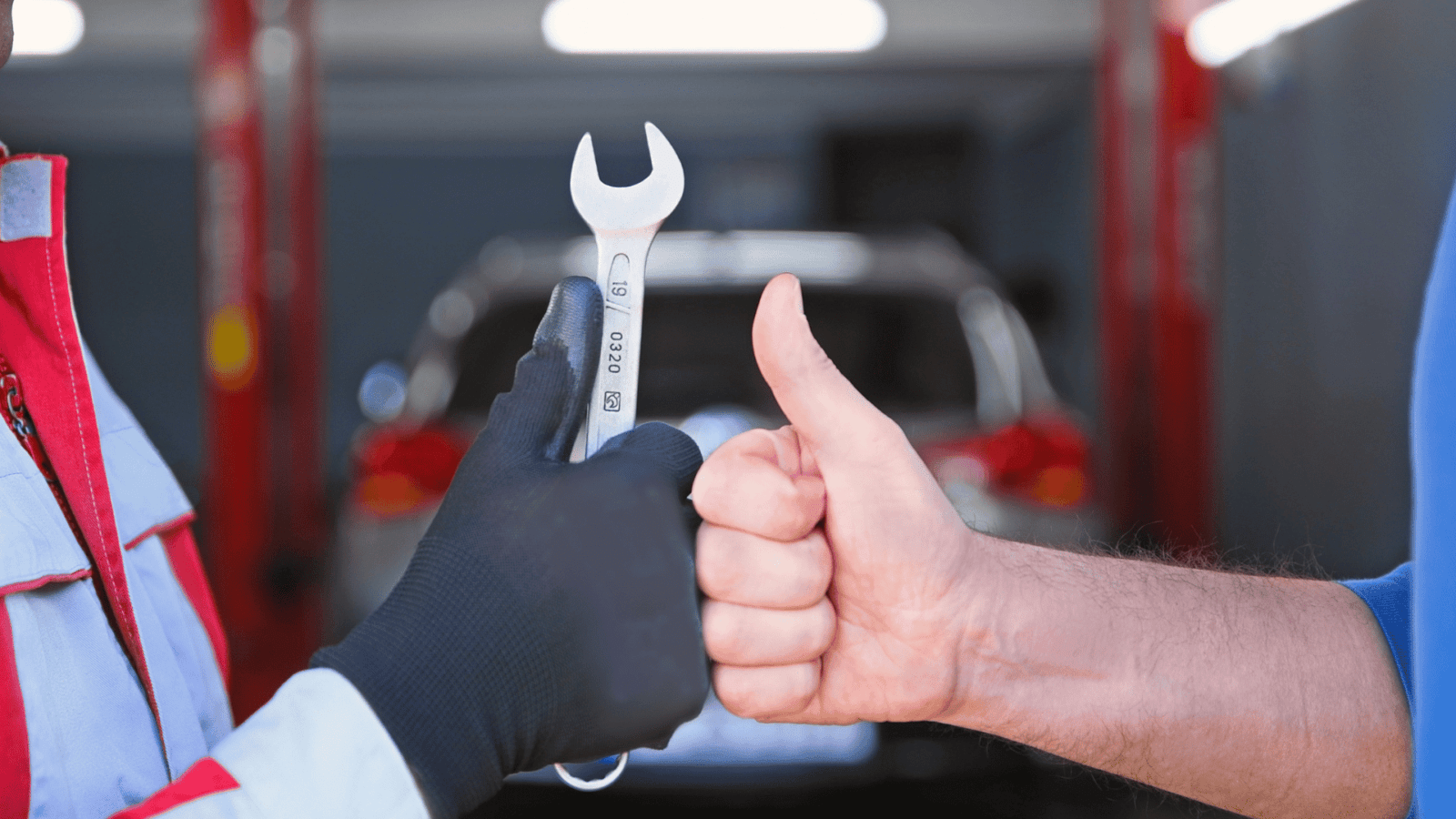As an auto shop owner or manager, you’re no stranger to the importance of providing exceptional customer service. After all, your customers rely on your expertise and trust you with their vehicles, which are vital to their daily lives. However, no matter how well you run your shop or how great your service is, there will always be a time when you receive a complaint. While handling complaints might feel uncomfortable, it’s important to understand that these situations can actually be an opportunity for growth, improvement, and even customer loyalty.
In this blog, we’ll dive into how you can effectively handle customer complaints in your auto shop and turn those negative experiences into positive outcomes. By following these best practices, you’ll not only resolve issues more efficiently but also build a reputation as a reliable, customer-focused business. Let’s explore how to handle complaints and transform them into opportunities.
1. Listen Carefully and Empathetically
The first step in handling a customer complaint is to listen. It might seem obvious, but many shop owners and staff are so eager to resolve the issue quickly that they forget to fully listen to the customer. When a customer expresses dissatisfaction, take a step back, and give them your full attention.
Why is listening so important?
Listening shows your customers that you value their input. It helps them feel heard and understood, which can instantly defuse a tense situation. Often, customers want to feel that their concerns matter, and simply listening with empathy can help in regaining their trust.
What should you do?
- Allow the customer to explain their complaint fully without interruption.
- Maintain eye contact, nod occasionally, and provide affirmations such as “I understand” or “I see what you’re saying.”
- Keep your body language open and calm.
By actively listening, you’ll gather all the necessary details about the problem and avoid misunderstandings that could make the situation worse.
2. Stay Calm and Professional
It’s easy to become defensive or frustrated when dealing with negative feedback, especially if you feel the complaint is unfounded. However, it’s critical to remain calm, composed, and professional throughout the conversation. Whether the customer is upset over a mistake, a delay, or a misunderstanding, reacting emotionally will only escalate the situation.
Why is this important?
Your response sets the tone for the conversation. Staying calm helps keep things under control and makes it more likely that the customer will remain calm as well. If you stay professional, the customer is more likely to walk away with a positive impression, even if the complaint hasn’t been resolved yet.
What should you do?
- Take a deep breath before responding.
- Don’t interrupt or argue with the customer, even if you believe they are wrong.
- Focus on the issue at hand, not the emotions surrounding it.
This will allow you to think clearly and find the best possible solution for both you and the customer.
3. Apologize Sincerely and Take Responsibility
One of the most powerful things you can do to address a customer complaint is to apologize. An apology can go a long way in calming an upset customer and showing that you take their issue seriously. It’s essential to offer a genuine, sincere apology for the inconvenience or frustration they experienced. Even if you believe the situation wasn’t entirely your fault, acknowledge their feelings and the impact of the problem.
Why is an apology necessary?
An apology is a simple way to show empathy and demonstrate that you care about the customer’s experience. It doesn’t necessarily mean you’re admitting fault, but it signals that you’re committed to resolving the issue.
What should you do?
- Use phrases like, “I’m really sorry you had this experience,” or “I understand how frustrating this must be.”
- Avoid making excuses or blaming others.
- Take ownership of the issue, even if it was due to factors outside your direct control (e.g., a supply chain delay).
By offering a sincere apology, you can defuse the customer’s anger and help shift the focus toward finding a solution.
4. Offer a Solution or Alternative
Once you’ve listened to the customer’s complaint and apologized, it’s time to offer a solution. Depending on the issue, you may need to take immediate action or offer an alternative solution that addresses the customer’s concerns. Be clear about what steps you’ll take to resolve the problem.
Why is offering a solution important?
Customers don’t just want to hear that you’re sorry – they want to know what you’re going to do about it. By offering a solution, you demonstrate your commitment to making things right and keeping their business.
What should you do?
- If the complaint is related to poor service, offer to redo the work at no charge or with a discount.
- If the issue involves parts or delays, provide an accurate timeline for when the issue will be resolved.
- Offer any compensation, such as a coupon or discount, to make up for the inconvenience.
The key is to make sure your solution is both fair and reasonable. Be transparent with the customer about what you can and can’t do.
5. Follow Up After the Resolution
After resolving the issue, don’t just forget about the complaint. A follow-up is an excellent way to show the customer that you care about their experience and are committed to continuous improvement. This follow-up gives you another opportunity to build the relationship, ensuring the customer feels valued and respected.
Why follow-up matters:
A follow-up helps demonstrate that you’re serious about making things right. It can also give you valuable insights into how well the solution worked, allowing you to improve your processes for the future.
What should you do?
- Reach out within a few days after the resolution, either by phone or email.
- Ask the customer if they are satisfied with the solution and if there’s anything else you can do for them.
- Use this as an opportunity to request feedback on how you can improve your service.
A simple, thoughtful follow-up can turn a dissatisfied customer into a loyal one, and might even inspire them to share their positive experience with others.
6. Use Complaints as a Learning Tool
Every complaint is an opportunity to learn and improve. When you receive a complaint, take the time to analyze the situation. What went wrong? Could it have been avoided? Was there a breakdown in communication or process? Understanding the root cause of the complaint will help you identify areas where your business can improve.
Why is this important?
Constantly improving your operations is key to growing your business. By addressing the underlying issues that lead to complaints, you can prevent similar problems from happening in the future.
What should you do?
- Conduct regular staff training to address common complaints, such as miscommunication or delays.
- Review your processes and policies to ensure they align with customer expectations.
- Implement tools like customer feedback surveys to gain more insight into common pain points.
By using complaints as a learning opportunity, you’ll not only resolve issues but also improve the overall experience for all of your customers.
7. Train Your Staff to Handle Complaints Effectively
Your team is the first line of defense when it comes to handling customer complaints. Make sure your staff is well-trained in how to respond to complaints with professionalism, empathy, and problem-solving skills. The better your team is at managing difficult situations, the less likely it is that complaints will escalate.
Why training matters:
Well-trained employees will know how to respond to customer complaints in a way that de-escalates the situation and keeps your shop’s reputation intact. They’ll also feel empowered to resolve issues quickly, which helps build customer trust.
What should you do?
- Offer customer service training for your team that includes role-playing scenarios and conflict resolution techniques.
- Create clear guidelines on how to handle complaints and when to escalate an issue to management.
- Encourage your team to remain calm and always offer solutions.
Turning Complaints into Opportunities
Handling customer complaints is a crucial aspect of running a successful auto repair shop. When managed effectively, complaints offer opportunities to improve your service, strengthen customer relationships, and build a reputation for exceptional customer care. By listening carefully, staying calm, offering solutions, and learning from feedback, you’ll not only resolve complaints but also build a loyal customer base that will trust you with their vehicles for years to come.
In the competitive world of auto repair, how you handle customer complaints can make or break your business. Use complaints as a chance to shine – your customers will appreciate it, and your shop will be stronger for it.



